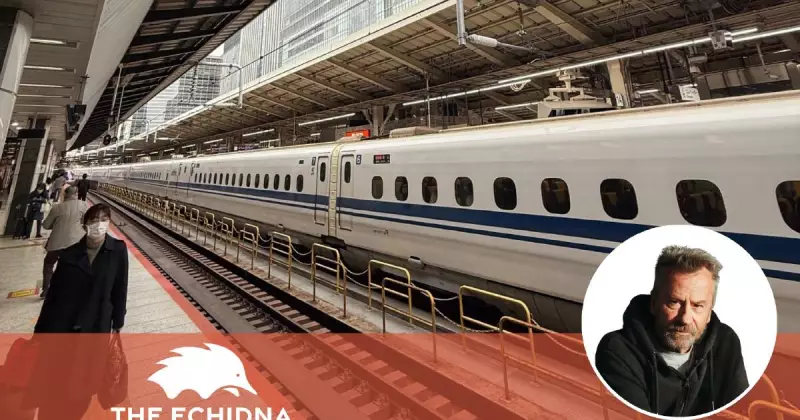
Japan's Railway Masterclass: A Glimpse into Australia's Potential Future
As the Toki bullet train glided away from Tokyo's urban sprawl, the Japanese Alps emerged in the distance within just thirty minutes. What initially appeared as clouds revealed themselves as snow-covered peaks, framed by the russets and reds of autumn foliage. This seamless transition from city to countryside exemplifies the transportation efficiency that continues to elude Australia.
The experience begins long before departure. During Tokyo's rush hour, finding the right platform involves none of the stress characteristic of Australian airports. There are no security queues, no lengthy check-in lines, and no struggles with uncooperative automated bag machines. Instead, orderly, short queues form at each clearly marked carriage point. Announcements made in Japanese are followed by comprehensible English translations - a stark contrast to the often garbled airport announcements back home.
The Clockwork Precision of Japanese Rail Travel
The duck-billed Shinkansen trains run every few minutes, gliding into stations where they're meticulously cleaned for the next journey. Not a single delay marred the experience - a level of reliability that seems almost mythical to Australian commuters accustomed to transport disruptions.
This is the very fast train of Anthony Albanese's dreams. The Prime Minister's talking point has, like the autumn leaves presaging winter, signalled the coming of an election. For much of the election cycle, the idea lay dormant before bursting from the tunnel of grand ideas, flashing past public consciousness, then vanishing again like a fleeting mirage.
The concept reemerged this year with a tantalising sketch of how the first stage between Newcastle and Sydney might be laid out. As always when mentioned, it was met with considerable scepticism from commentators and the public alike.
Australia's Infrastructure Reluctance
Watching the Japanese countryside from a comfortable seat with ample legroom, one wonders what makes Australia so reluctant to adopt grand ideas, or even fairly pedestrian ones. This resistance was visible years ago in Sydney when naysayers complained about the light rail project, and it continues today in Canberra with never-ending complaints about extending the city's embryonic tram network.
Significantly, nobody in Sydney complains about the light rail now that it's operational, and similar acceptance will likely follow in Canberra once extensions are complete.
The journey from Tokyo to Niigata by Shinkansen takes approximately 45 minutes. While not cheap - costing the equivalent of an airfare - the convenience is undeniable. Japanese business travellers work efficiently on their laptops as the landscape transforms outside their windows.
Those distant mountains eventually loomed above the train, glinting in brilliant sunshine. Passing through a series of tunnels, the emergence into a snow-blanketed valley provided postcard-perfect beauty against incandescent maple leaves. Further proof of transportation to a different world came from posters warning visitors about bear attacks in recent months - a reminder that for all Japan's order and precision, a wild heart still beats beneath the surface.
As Australia continues debating high-speed rail, the Japanese example offers both inspiration and a practical blueprint. The question remains whether political will and public support can align to transform this long-held vision into reality.





